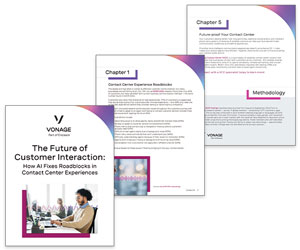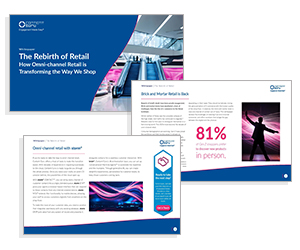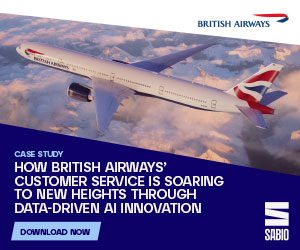Rod Jones takes a look at some of the key changes contact centre managers should be preparing themselves for as the industry moves towards 2020.
During the next four to five years, contact centre operators are advised to develop strategies that will transition their department from “Cost Centre” to quantifiable “Revenue and Profit Centre”.
To achieve this will require considerable organisational redesign, significant investments in technologies, process design and process re-engineering. And this is in addition to system integration, radical changes to the staffing and workforce management model, and the enhancement of far more specialised managerial and operational skills.
Contact centres will be staffed by Super Agents
Analysts concur with the prediction that the 2020 customer interaction centre will be staffed by what is being termed “Super Agents”.
These agents will have all of the requisite knowledge, experience and skills necessary to understand and resolve or advise on all manner of product and services issues.
Given the predicted uptake of the multichannel customer, it will also be a prerequisite for the Super Agent of 2020 to have a high level of understanding and technical competence. This will help them to adequately resolve ‘channel failure’ issues when engaging with customers.
To achieve high levels of First Contact Resolution, the Super Agent will be significantly more mature than their current counterparts.
The indicators are that Super Agents will be between 23 and 30+ years old, well experienced in the operations of different business units within the organisation.
They will also be well-tenured before being promoted into the customer interaction centre. On entering the customer interaction centre, Super Agents will be well advanced on their respective organisational career paths.
Super Agents will need high empathy and active listening skills
Super Agents will need to be experts and specialists demonstrating superb communication skills, high EQ, high empathy, tenacity, resilience, active listening skills and the ability to handle high cognitive load.
They will also be required to be technically adept and eminently capable of reaching out to specialised knowledge workers throughout the organisation in order to rapidly support customers’ issue resolution. The 2020 customer will demand a lot more than simply answers; they will want demonstrable creativity and ‘empowerment’ in the context of problem resolution.

To achieve fast, effective and efficient issue resolution, operators will have to adequately empower Super Agents to make significant decisions and commitments on behalf of the organisation.
Appropriate strategies, policies, processes, systems and training will be required to implement this aspect of 2020 operations.
The evolution from today’s operating environment – with entry-level staffing, high attrition and low productivity – to the technology-enabled, empowered Super Agent of 2020 will have a significant impact on organisational structures.
WFM solutions will be used more strategically
Whilst conventional workforce management (WFM) methods and technologies have become increasingly more sophisticated, most solutions focus purely on managing and optimising current resources.
With an eye to the 2020 customer interaction centre, operators will be required to take a far more strategic view of WFM than has been the case in the past. It has become increasingly essential to be able to accurately forecast the optimum resources necessary to meet strategic and tactical goals.
WFM solutions will be required to have capabilities not only for forecasting but also for data capture and in-solution analytics. These solutions will no longer rely on Erlang-based algorithms, but rather on omnichannel event-simulation techniques.
The rapidly changing nature of the call centre agent will also dictate that the operation focuses more on the ‘life–work balance’ demands of the future workforce. Short shift factors (e.g. 4 hour units) will impact significantly on the necessity for accurate resource planning and optimisation.
Integrated skills and career management, e-learning and remote ‘shift bidding’ by Super Agents will become prerequisites for effective and efficient operational management. It will also be important for such solutions to meet statutory and regulatory conditions relating to labour management.
There are strong indicators that customers want to build relationships with specific agents and, as such, based on accumulated customer data and agent profiling, “interaction steering” (a more sophisticated technique related to “skills-based routing”) will impact strategic, operational and technology planning.
Analytics will drive tactical decision making
By 2020, the customer interaction centre will become the organisation’s laboratory for the development and deployment of customer-centric services and functions. It will become one of the primary and most important sources of a great deal of vital business intelligence.
There will be great reliance on access to ‘Big Data’ and meaningful analytics to provide operational, senior and executive management with credible business intelligence to drive tactical and strategic interventions.
Boundaries between agents in the physical contact centre and knowledge experts within the greater organisation will diminish significantly. Operators will be compelled to bridge the gap between the physical contact centre and the knowledge workers by altering organisational structures, inter-business unit protocols, processes and procedures.
Contact centre managers will focus less on operations
The role of the contact centre manager in 2020 will become considerably less operational and will have a great deal more focus on the strategic aspects of the organisation as a whole.
The 2020 manager will interface on a regular basis with the boardroom and the executive level of the organisation.
A primary function will be to ensure that adequate and appropriate resources are made available to enable the customer interaction centre to function at a strategic level and to drive measurable customer value and consequential profit.
Managers will have to sustain strong relationships with executives and managers in other business units in order to guarantee high performance and measured SLAs between business entities.
Large numbers of customers will “channel hop”
The 2020 customer interaction centre business model will be driven by appropriate and fully integrated technologies and systems. These will include enterprise-wide unified communications – a single platform delivering appropriate functionalities to the customer interaction centre.
The customer interaction centre will be built to provide omnichannel, multimedia and multi-device integration and functionalities, both internally within the enterprise and externally in the entire customer environment.

Large numbers of customers will “channel hop” and engage with the organisation in concurrent, multiple channel interactions relating to the same issue. The organisation will be required to manage this reality within the framework of the fully integrated contact centre model.
The deployment of True CRM (a real-time, comprehensive “single view of customer” including all historical transaction and interaction records and data) will be a strategic imperative.
Intelligent skills routing will get customers to the right agent
Intelligent skills and resource-based routing and interaction steering will be the key technology driver by 2020. Getting the right interaction to the right agent with the right skills and experience will be fundamental to efficient, effective operations. Omnichannel interaction analytics will be important contributing drivers.
Customers will prefer non-voice interactions
Webchat will become the dominant channel. This reality is already being driven by customer channel preferences for non-voice / text-based interactions, the customer’s wish to remain in the browser, or preferably within the app.
Webchat will also emerge as the preferred channel for agents, as the younger generations easily identify with text and chat models. Multiple concurrent chat interactions (4–5 simultaneous engagements) will drive operational efficiency and cost management.
Webchat has already proved to deliver high rates of fast and conclusive issue resolution (in the hands of appropriately trained and adequately provisioned Super Agents) and this is expected to increase significantly in the future.
Video is likely to grow while email dies a “slow” death
Video is likely to grow significantly as access to fast, low-cost bandwidth increases along with the proliferation of smart, video-enabled devices.
Email (according to UK professionals surveyed by Call Centre Helper) will “Die a slow and lingering death” into 2020 and beyond.
It is probable that the proliferation and the quality of engagement channels (text, voice and video) provided by social media platforms will further support customer channel preferences in this sphere.
Knowledge management systems will support self-help options
Knowledge management systems with self-learning and self-populating functionality will support customer self-help and self-service offerings.
These systems will also support “Next Best Action” screen pops on desktops to steer Super Agents to faster issue resolution.
This will drive higher rates of customer satisfaction with significantly shortened interaction handling time, which will have a significant direct cost-saving impact on the operation.
Voice biometrics will address security issues
Speech technologies will drive ease of access and high levels of customer satisfaction, while addressing operational efficiencies and security issues.
For example, voice biometrics will be the de facto for security and caller authentication processes.
Automation will also drive fast, effective issue resolution and support customer relationship building, driving high customer satisfaction, reducing effort and risk, increasing customer retention, lifetime value and individually identified customer profitability.
Social media profiles will inform “opt in” communication

Rod Jones
There are also strong indications that customers’ profile and privacy settings within the framework of their preferred social platforms will be closely linked to their individual views and preferences relating to “opt in” and “permission-based” communication.
Operators are advised to ensure that operational strategies, processes and technologies are put into place to ensure the adequate handling of social CRM engagements and customer expectations.
In some markets, customers’ expectation of response times for social media interactions are almost mirroring expectations for telephone and chat – that they receive an immediate response!
With thanks to Rod Jones
The observations, opinions and recommendations expressed by the writer in this article are based on personal perspectives, knowledge and information gleaned from multiple international and local sources, and interviews with professional colleagues and recognised industry analysts.
Author: Megan Jones
Published On: 23rd Mar 2016 - Last modified: 15th Aug 2025
Read more about - Customer Service Strategy, Analytics, Call Routing, Employee Engagement, First Contact Resolution (FCR), Knowledge Management, Omnichannel, Predictions, Service Strategy, Team Management, Training and Coaching, Video Solutions, Workforce Management (WFM)





















